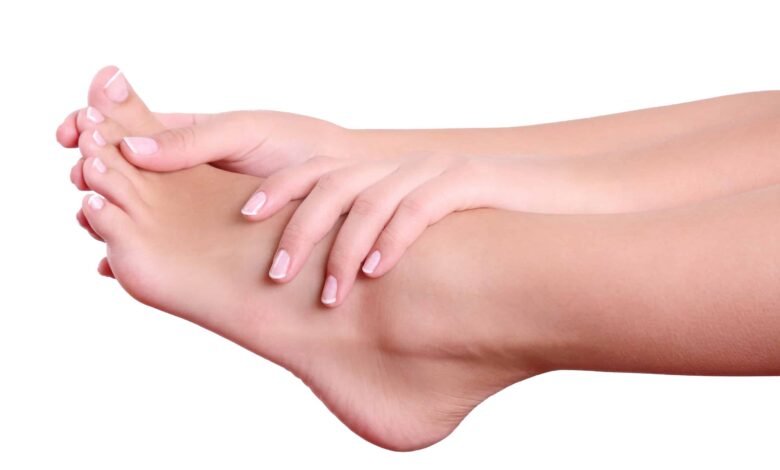Mycosis

What is mycosis?
Mycosis is a rash on the skin of the leg. This is the most common fungal skin infection. There are three main types of mycosis. With each type, different parts of the foot are affected, and the skin may look different.
What are the symptoms of mycosis?
Mycosis can cause itching and burning on the skin of the feet and between the toes. It is also possible that the skin starts to peel and turn red. Symptoms depend on the type of mycosis you have.
The first type of mycosis usually occurs between the fourth and fifth toes. The skin becomes scaly, red and cracked. Some people can also get a bacterial infection and this can cause even more itching.
The second type of mycosis is called “moccasin” and begins with a small inflammation of the foot. The skin at the end of the heel then becomes thicker and firmer.
In more severe cases, toenails become infected and may crack and begin to break, even if they fall off. Fungal infection of the toenails should be treated separately.
The third type of mycosis is characterized by the sudden appearance of fluid-filled blisters on the skin. Vesicles usually appear on the bottom of the foot, but they can appear elsewhere. Bacterial infection may also occur with this type of mycosis.
What causes ringworm?
Ringoid is caused by a fungus that grows on or in the top layer of the skin. Fungi thrive best in warm, moist areas of the skin, such as between the toes.
Mycosis is very easy to catch. You can catch it by touching the feet of someone who has it. Most often, people catch it by walking barefoot on infected surfaces, usually near public pools or in locker rooms.
Fungi then develops in the shoes, especially if the shoes are so tight that air cannot move around the feet.
If you touch something that already has the fungus on it, you can spread the mycosis to other people who have touched you, even if you did not become infected.
Some people are more prone to ringworm than others, and doctors don’t know why. Once you have had ringworm, you may get it again.
Treatment of mycosis
Medicated creams, ointments, gels and sprays that are available in pharmacies are, in most cases, effective enough in the treatment of mycosis.
They contain antimicrobial ingredients that penetrate the skin or nails and destroy the fungus.
It is important to follow the instructions of the manufacturer and the doctor for the correct application of the medicine.
Violation of the doctor’s prescriptions or duration of treatment longer than necessary can lead to re-development of the infection.
In more severe cases of mycosis or complications, the doctor may prescribe stronger systemic antifungal drugs.
These medications are taken by swallowing the medications, which then enter the bloodstream where they can reach the affected areas and fight the fungus from within.
Systemic treatment is usually used in cases unresponsive to traditional drugs or in widespread mycoses.
In addition to the application of medical treatment, it is important to pay special attention to foot hygiene.
Washing your feet daily with warm water and soap is especially important, as this removes fungus and bacteria from the surface of the skin.
After washing, the feet should be thoroughly dried, especially between the toes, to prevent moisture retention – a condition that is necessary for the development of the fungus.
It is also important to keep shoes clean and dry. Regularly changing your socks and washing your shoes can help prevent the spread of the fungus.
It is recommended to prefer breathable materials for socks and shoes that allow better air circulation around the feet.
Besides the hygiene of the feet, attention should also be paid to the general immune system of the body.
Strong immunity can help the body deal with the fungus more effectively and prevent it from reappearing.
To support your immune system, it is important to eat a balanced and healthy diet, maintain an active lifestyle and avoid bad habits such as smoking and alcohol consumption.
In short, the treatment of mycosis requires patience and consistency.
The application of the medicines prescribed by the doctor, the observance of hygiene measures and the support of the immune system are of crucial importance for the successful fight against the fungus.
When new symptoms appear or complications arise, it is always advisable to seek medical advice for proper diagnosis and appropriate treatment.
Prevention
In order not to get ringworm again, you can do several things:
- Wear open sandals or slippers in public places such as changing rooms and use talcum powder to keep your feet dry.
- Wear sandals or leather shoes whenever possible to keep your feet moist and breathable.
- When indoors, wear socks without shoes
- Let your shoes air out for 24 hours before putting them on.
- If you have ringworm , dry your groin area before your feet after bathing. Also, put your socks on before your underwear. This will prevent the fungus from your feet from spreading and causing itching in the groin area.
< li>Wear cotton socks. They absorb sweat. Change your socks twice a day.



